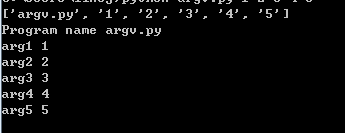Python使用numpy实现BP神经网络
本文完全利用numpy实现一个简单的BP神经网络,由于是做regression而不是classification,因此在这里输出层选取的激励函数就是f(x)=x。BP神经网络的具体原理此处不再介绍。
import numpy as np
class NeuralNetwork(object):
def __init__(self, input_nodes, hidden_nodes, output_nodes, learning_rate):
# Set number of nodes in input, hidden and output layers.设定输入层、隐藏层和输出层的node数目
self.input_nodes = input_nodes
self.hidden_nodes = hidden_nodes
self.output_nodes = output_nodes
# Initialize weights,初始化权重和学习速率
self.weights_input_to_hidden = np.random.normal(0.0, self.hidden_nodes**-0.5,
( self.hidden_nodes, self.input_nodes))
self.weights_hidden_to_output = np.random.normal(0.0, self.output_nodes**-0.5,
(self.output_nodes, self.hidden_nodes))
self.lr = learning_rate
# 隐藏层的激励函数为sigmoid函数,Activation function is the sigmoid function
self.activation_function = (lambda x: 1/(1 + np.exp(-x)))
def train(self, inputs_list, targets_list):
# Convert inputs list to 2d array
inputs = np.array(inputs_list, ndmin=2).T # 输入向量的shape为 [feature_diemension, 1]
targets = np.array(targets_list, ndmin=2).T
# 向前传播,Forward pass
# TODO: Hidden layer
hidden_inputs = np.dot(self.weights_input_to_hidden, inputs) # signals into hidden layer
hidden_outputs = self.activation_function(hidden_inputs) # signals from hidden layer
# 输出层,输出层的激励函数就是 y = x
final_inputs = np.dot(self.weights_hidden_to_output, hidden_outputs) # signals into final output layer
final_outputs = final_inputs # signals from final output layer
### 反向传播 Backward pass,使用梯度下降对权重进行更新 ###
# 输出误差
# Output layer error is the difference between desired target and actual output.
output_errors = (targets_list-final_outputs)
# 反向传播误差 Backpropagated error
# errors propagated to the hidden layer
hidden_errors = np.dot(output_errors, self.weights_hidden_to_output)*(hidden_outputs*(1-hidden_outputs)).T
# 更新权重 Update the weights
# 更新隐藏层与输出层之间的权重 update hidden-to-output weights with gradient descent step
self.weights_hidden_to_output += output_errors * hidden_outputs.T * self.lr
# 更新输入层与隐藏层之间的权重 update input-to-hidden weights with gradient descent step
self.weights_input_to_hidden += (inputs * hidden_errors * self.lr).T
# 进行预测
def run(self, inputs_list):
# Run a forward pass through the network
inputs = np.array(inputs_list, ndmin=2).T
#### 实现向前传播 Implement the forward pass here ####
# 隐藏层 Hidden layer
hidden_inputs = np.dot(self.weights_input_to_hidden, inputs) # signals into hidden layer
hidden_outputs = self.activation_function(hidden_inputs) # signals from hidden layer
# 输出层 Output layer
final_inputs = np.dot(self.weights_hidden_to_output, hidden_outputs) # signals into final output layer
final_outputs = final_inputs # signals from final output layer
return final_outputs
以上就是本文的全部内容,希望对大家的学习有所帮助,也希望大家多多支持【听图阁-专注于Python设计】。
